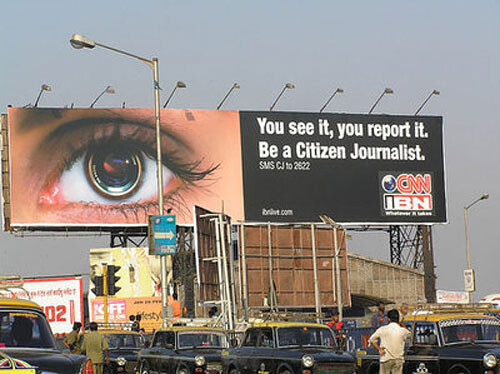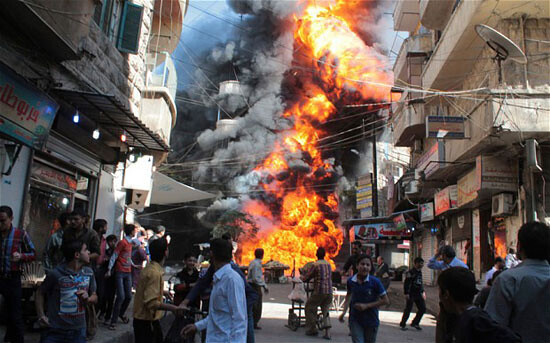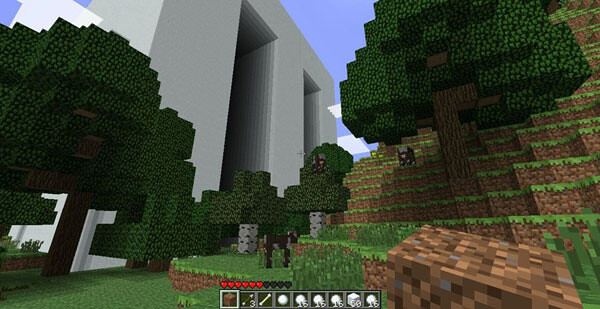A Compressed Archive
One of the first acts the Syrian people performed when they rose up against the Assad regime was to destroy photographs and public monuments depicting Hafez al-Assad, Bassel al-Assad, and Bashar al-Assad. They proceeded to replace the national flag with another one from a bygone era. The other thing the Syrians destroyed was the notion of dynastic legacy. The relentless and predictable growth of such a legacy dictated how the Syrians occupied themselves in their waking and dreaming life. It had an inner, hierarchical structure that reinforced the passing of time and the oppressive force of history.
To experience life under such a legacy is to live inside a compressed archive with a recurrent theme that continuously expands inside the minds of citizens. The list of events is long: the commemoration of the Ba’athist coup d’état of March 8, 1963; the Corrective Revolution of November 13, 1970; the October War of 1973; the memorial of Bassel al-Assad’s passing, just to name a few examples. The frequency of such events sets an annual calendar that takes over the personal memories of the Syrian people.
They take out a loan on their present and future for real estate they will never own. They resemble a Japanese soldier who was lost in the jungle for thirty years, only to reemerge later with little history except for his participation in the war. The Syrian people are forced to become props that exist in an archive that is built around the Leader, his Party, and his Family. The outcome of such a stasis is a stranglehold over the freedom of ideas, a stranglehold that has governed Syria for the past forty years.


Celebrating Death: Technological Salvation
A torrent of images of Syrian heroics, deaths, conversations, and screams flooded the web as soon as the revolution broke out. These new Syrian diaries were formed by digital images and videos of the everyday. Syrians diligently used social media (blogs, articles, and forum entries), unleashing massive amounts of information documenting events and ascertaining facts. All of this has been archived on the web for circulation and use.
By salvaging death from the compressed archive of oppressive power, Syrians are reinstating themselves as the very material of this gargantuan documentation of fast-changing events. With this daunting quest, they carry out two revolutions: one that is political and another that is technological. Their apocalyptic loss is taking place at the peak of their technological learning curve. As if to marry Filippo Marinetti’s celebration of modern technology with the inevitability of techno-salvation professed by Thorstein Veblen. Both celebrated technology as a way to change social relations and concepts of wealth and property by accelerating and amplifying means of communication.
The Syrians are creating their own archive and are using the web to forge new connections in order to replace old ones that are no longer relevant. At the height of such interactivity they also celebrate the “newness” of the technology that draws the world’s attention to the need to condemn their death and suffering.
An Image of “Marwan”: What Youssef Didn’t Say
On February 18, 2014, the news media was engrossed by the touching story of “Marwan, a Syrian child crossing the Jordanian desert alone.” News outlets and social media networks broadcast and shared Marwan’s picture after Andrew Harper, the United Nations High Commissioner for Refugees (UNHCR) Country Representative in Jordan, posted it on his Facebook page. The picture shows Marwan carrying a plastic bag containing some personal belongings, and behind him is the unforgiving desert. The reality that belied this fiction was that Marwan was part of a Syrian civilian contingent that was crossing the Jordanian desert, and as the UNHCR later explained, Marwan got temporarily separated from his family, only to be reunited with them later. They all crossed into Jordan safely.
The enormity of the Syrian tragedy did not allow the news media to verify the authenticity of the picture and the story woven around it. For us to believe that Marwan truly crossed the desert by himself carrying his bag is for us to accept that he was to disappear without a trace. Where did the photographer come from? Who is this heartless photographer who busied himself with taking the picture instead of helping the poor child? And what kind of unlikely coincidence places the UN team right in Marwan’s path?
None of these questions were asked by reporters for two reasons. The first has to do with the credibility of the UN and its relief team; when they say that Marwan crossed the desert alone, we are compelled to take this at face value. The second reason is that a story like Marwan’s has to happen several times for the world to have a reason to believe it. His image only reinforces past events. Many Syrian children cross many deserts and die for whatever reason: thirst, abandonment by their families, getting buried under rubble, or inhaling poisonous gas. Marwan’s image is our living document of a tragedy too sad for our hearts to take.
Was Youssef of the Quran a real person? Or was he just an archetype for countless stories of ingratitude and envy? Was he really handsome? Or was his beauty an encapsulation of the beauty of all the children who were born here and there in a desert not very far from the desert where the Syrians got lost? Was Yacoub the only man to lose his eyesight out of sorrow? Or is it that the entire world has lost its sight in the face of the Syrian tragedy, without even blinking an eye? It is likely that the world has become preemptively blind due to a deep sense of sadness that it has not experienced yet. This sadness will eventually arrive. But until then, the world will not open its eyes nor make time for its heart to open.


How Many Dead Do We Need to Make a River?
As they wait for the world to wake up, what do Syrians do? They desperately archive their individual dying. Blood flows for cameras to see. Maybe Syrians know deep down that counting their dead won’t grant them immediate or near-term emancipation. Documentation needs a sense of finality to be regarded as a document. It is not enough for 200,000 or 300,000 people to die. The survival of a few Syrians casts doubt on the validity of the document. With such doubt, Syrians try even harder to internationalize their struggle and to reach with their bloodshed those who are powerless to stop it.
Since the early days of the revolution, the horrific images of destruction and death that have come out of Syria have drained supporters of their energy, solidarity, and ability to act. There is little that can be done beyond expressing sadness, concern, and condemnation. To be an effective supporter, one must maintain a level of self-safety while recognizing, right from the start, the contradiction between one’s privilege and the hardship endured by the people one is supposed to support. This contradiction is brought into stark relief by the horrific images coming out of Syria, so much so that these images overwhelm supporters and prevent them from affecting the situation.
The ever-shifting situation in Syria creates multitiered support communities. Those who experience the worsening crisis firsthand but manage to escape the ongoing inferno are better off than the ones stuck in the midst of it. They form the first tier of support; they understand the situation the best because they lived it and have survived to tell the tale. The second tier of support is people who live in other countries. The ones who live in neighboring countries are so far removed from what is happening across the border that to know of it utterly alienates them and renders them incapable of putting into words how they feel. People who live on the other side of the world are too far away to put in the time and moral fortitude to generate sympathy for the situation. Solidarity is in such a state of paralysis that in order to affect the situation, one has to volunteer to travel to Syria to be able to share the daily apocalypse with Syrians.
After the Holocaust, projects were launched to document the names and personal histories of the victims. These efforts were not sufficient to capture the fullness of the lives lost, but the documentation was more detailed than it would have been if the victims has been treated as one giant collective of victimhood. To channel Jean Baudrillard’s method of analysis, one could say that the death of six million Jews absolves the living from sorrow and shame, since to mourn so many victims is beyond human capacity and understanding. Therefore, humanity colludes to freeze these victims in an archive, similar to the victims of Noah’s flood or those of Sodom and Gomorrah. The use of a disaster as a backdrop enforces the impression of its inevitability.
In the case of Syria, there are many documents: pictures, videos, names, stories, and rumors of death and torture. Each victim has a name and a body, a face and a life story that is part of the countless entries in the archive. It’s possible to imagine that such an enormous archive could turn the blood of Syrian’s into water.


Death Without Interpretation
Three years of collecting stories created the new archive of the Syrian revolution: an open, incomplete document listing the dead. Imperfect and ineffective as it might be, it is the dead’s only weapon. The death held within it is incomplete. The density of death makes death the purpose of the archive, and not the material within it. The ongoing death, and not life and its outcomes or events and their interpretation, creates the digital matter. The collapse and resurrection of the subject of the archive requires the endlessness of death and the disappearance of its interpretation.
Burying the Present
The daily visual torrent of Syria’s story freezes time in the here and now. The pictures are neither past nor future, but a self-propagating archive of the present, making it difficult to draw meaning and understanding from them. We can compare the archive to a waterfall, or to an “eco-discourse,” a word Bilal Khbeiz uses to describe how the world reacts to images of death and destruction in Afghanistan: interest in such images is garnered through the framework of the aesthetic. Such images don’t generate enough interest because their representational power shifts their value into the domain of art instead of the domain of the human condition.
Do images of death, the stories of those who died and those who survived, their words and those that are written about them on the internet, hold any value? This question is too difficult to answer. What will the words accumulating on the servers of the world wide web culminate in? I think that these images gravitate towards the aesthetic rather than the meaningful because of the attraction of the naked power of pure death. It is similar to the attraction of images of the devastating power of a tsunami or a volcano. It is a helpless fascination with the artistic power of a “landscape scene,” a fascination that journalists, victims, and spectators share. This transforms the victims and their suffering into entries in an archive comprised of news pieces about data points marked on a calendar of battles and natural disasters.
The new Syrian archive turns the dead into statistics that monotonously conform to the natural history of death. The dead belong to a past that is a wound healing rapidly towards forgetfulness. This archive is archaeologically impotent to resurrect the dead and remember them in the way Jacques Rancière does in Proletarian Nights: The Workers’ Dream in Nineteenth-Century France. On the contrary, this archive buries the dead in a present that is forever dying.


News Services and Statistics as Video Games
The avalanche of images of massacres, of children recoiling from the effects of chemical weapons, of signs of the systematic torture of detainees, create an archive that the living cannot escape from. All who live inside it are overwhelmed by its speed. Its technological nature makes it a continuously updated news stream that cannot be interrupted or analyzed. People die in front of the camera, witnessed “interactively” by a spectating public. This situation creates a challenge: we must make a connection between, on the one hand, this flow of images, and on the other, the reality of the victims and the meaning of their deaths. An open digital archive that updates instantaneously and continuously frames victims and the images of them as an aim instead of a topic. It classifies entries based on the number of views rather than the number of deaths.
The speed with which the archive of Syrian victims is updated, shared, exchanged, and discussed on the internet places Syrians and their cause on equal informational footing with news, entertainment, and digital games. When a player dies in a game, they revel in the morbid sensation of temporarily empathizing with the dead and their tragedy, only to rise again and experience dying one more time.
